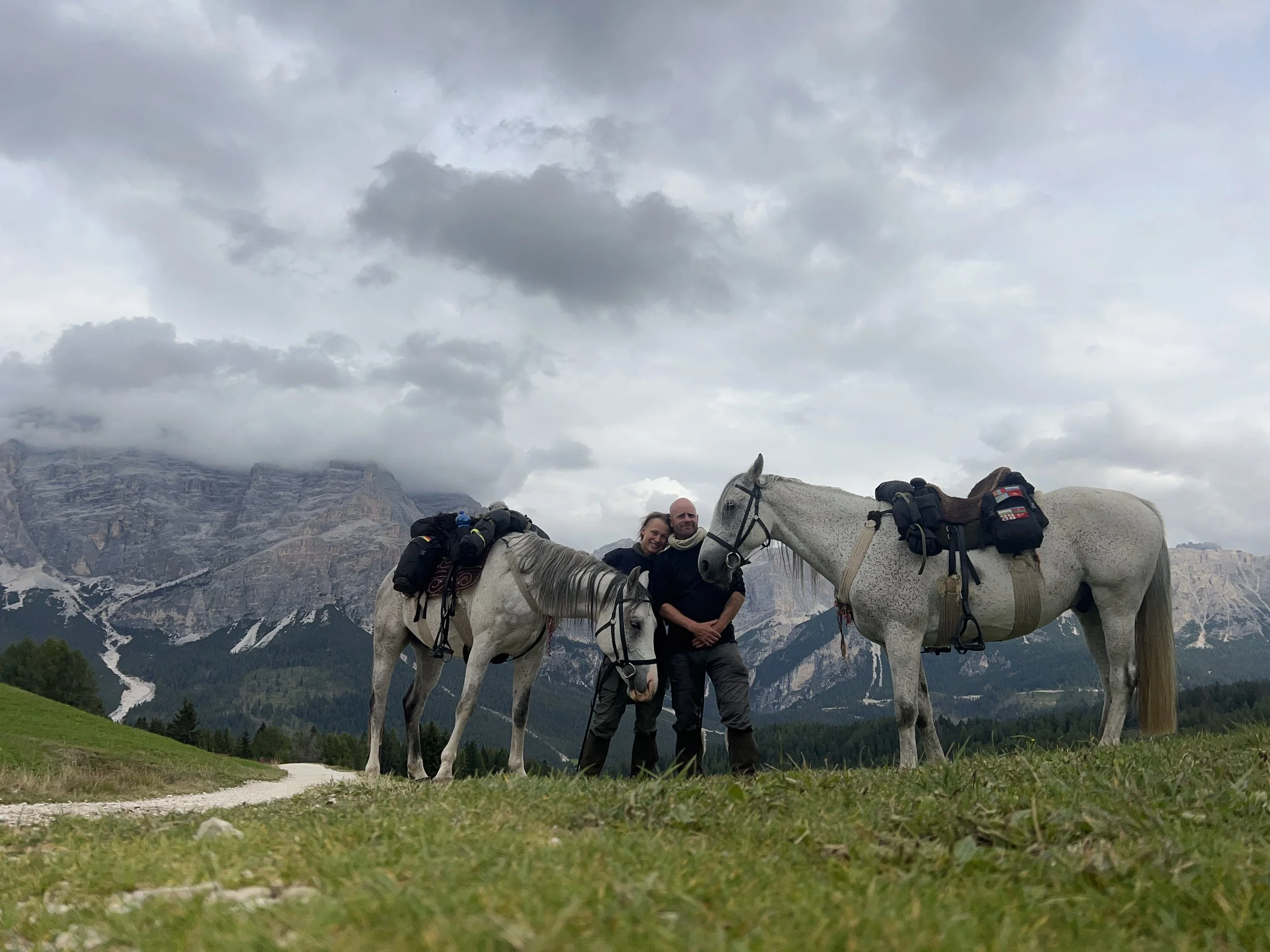How many kilometers can you plan to cover on a long-ride?
This question comes up a lot, and my usual answer is around 20–40 km per day. But there’s much more behind that number. Let’s look at the key things that influence how far you and your horse can go each day — and why there’s no one-size-fits-all answer.
First and foremost, the horse decides the pace.
The 7/7/7/3 Rule
When we travel, we follow a simple rule we call the 7/7/7/3 Rule. It means the horse should have seven hours a day to eat, seven hours to sleep, and seven hours under saddle while traveling. The remaining three hours are like a wild card — time you may need for extra grazing, for more rest, or sometimes for a slightly longer ride.
Because we don’t always know the roads or where we’ll spend the night, we need that flexibility. There is always a certain level of risk when traveling freely. You never really know whether you’ll find a good pasture or how long it will take before someone takes you and your horses in. And even when you do find a place, the horse may not get enough food or may not feel comfortable enough to rest.
I call this taking fuel out of the horse’s tank. When the horse uses its seven hours of rest efficiently and gets good-quality, sufficient food during the seven hours for feeding, you’re well prepared for the next day. But if the horse doesn’t rest properly or the food isn’t great, it’s like taking fuel from a tank that’s already running low.
For example, we once arrived somewhere after riding five kilometers more than planned. Everything looked ideal — unlimited hay and a nice stable — until we noticed ostriches in a nearby paddock. Tequila was terrified of them. He barely ate, stressed all night, and didn’t get any proper rest. Fortunately, we had already planned a second night at that place, so we could give him time to recover. But if we had needed to travel on, we would have had to adjust our schedule to give him more time to eat and sleep. Situations like these show why time matters far more than distance on a long-ride.
Every Long-Ride Is Unique
We love to say: “Ride your ride.” Every journey is different — because every horse and every rider is different. Marengo came to us almost by destiny. Tequila took longer. It also took time to realize that an Arabian-Kabardine cross like Marengo needs a travel partner with a similar temperament and energy level — which we found in a Shagya Arabian - Tequila. Horses with Arabian blood love to move, they are smart, sensitive, and can cover ground efficiently. A cold-blooded draft horse simply won’t move at the same speed — and that’s perfectly fine. What matters is choosing the right partner for the way you want to travel.
That said, you have to prepare any horse for a long-ride. It’s absolutely essential to build up their fitness before heading off. I have already written a blog article about this topic, which you can find [here].
We enjoy trotting and have even started to include a canter every now and then, which allows us to cover more kilometers than we would by walking alone. But you can only go faster if your equipment allows it. That’s one reason we travel so light and why we developed our own cavalry saddle and pack system specifically for long-riding. If your saddle doesn’t fit or your bags aren’t balanced, trotting becomes uncomfortable and can even cause damage to your horse very quickly. Bad equipment slows you down — physically and mentally.
Terrain and the Unexpected
The landscape also plays a huge role. Mountains slow you down, wide open flats allow you to go farther, and smooth forest roads are usually easier to ride than narrow goat paths. Weather, road surface, traffic, and the condition of your horse each morning will change your plans again and again. That’s the beauty of long-riding — you walk into the unknown every day.
Rest Days
No matter whether you ride 20 km or 40 km a day, you will need to take rest days. Again, we think in hours under the saddle rather than kilometers. After spending around 30 hours with the saddle on — that would be roughly four days if you follow the 7/7/7/3 rule — we try to take a day off. But you also need to consider your horse’s mental state. Even if you haven’t done particularly long days, a horse can still become mentally tired, and you need to stop to give them a break as well. Once again, your horse defines the pace.
Of course, stopping whenever you want isn’t always possible. When traveling without fixed plans, you depend on the flexibility of people willing to take you in. When we struggle to find a place to rest, we simply extend the eating and resting times each day or do half days instead.
My Best Advice
If you want to start long-riding, my biggest recommendation is simply to begin. Start with shorter days and focus not on hitting a certain number of kilometers, but on finishing each day in a place where your horse can rest, eat well, and feel safe. Slowly stretch your days and watch how your horse responds. Let your horse guide you — especially if you notice weight loss or fatigue. Respond immediately. I’ll write more about this topic in one of the next blog articles.
For now, I hope this gives you a good understanding of why daily distances can vary so much and why time and horse welfare matter more than numbers. If you have questions, please write them in the comments. And most importantly — go out there and ride your ride.

